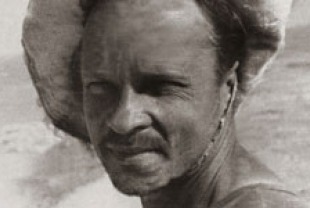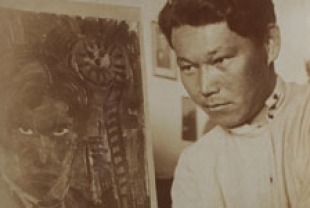This unusual and fascinating documentary is directed by Amanda Pope and Tchavdar Georgiev. It charts the inspiring story of Igor Savitsky (1915-1984) who spent most of his adult life rescuing avant-garde art and ethnic artifacts (handmade garments, jewelry, carpets, etc.) during the years of Stalinist purges and imprisonment of artists and other creative souls. This frustrated painter became a collector of illegal art and established a museum in the small town of Nukus in Uzbekistan. Excerpts from his writings are read by Ben Kingsley. Here's one example:
"I found these paintings rolled up under the beds of old widows, buried in family trash, in dark corners of artists' studios, sometimes even patching a hole in the roof. I ended up with a collection that no one in the Soviet Union would dare to exhibit."
With great courage and imagination, Savitsky single-handedly collected the works of talented Soviet artists who were not producing in the realist style used for propaganda under communist rule. Those who strayed from this approach were dispatched to mental institutions, prison camps or firing squads. Interviews with Savitsky's curatorial successor Marinika Babanzarova, international art experts, and some of the children of the artists profiled in this documentary lend further insights into the miraculous story of what a dedicated lover of art achieved.
Savitsky rescued about 44,000 pieces of underground art which are now housed in the museum he established. The collection is valued at hundreds of millions of dollars. This means that these valuable treasures are a possible target of Islamic fundamentalists, art profiteers, and corrupt bureaucrats. Savitsky pointed out that the true value of the collection lies elsewhere:
"I like to think of the museum as a keeper of the artists' souls. Their works are the physical expression of a collective vision that could not be destroyed."

